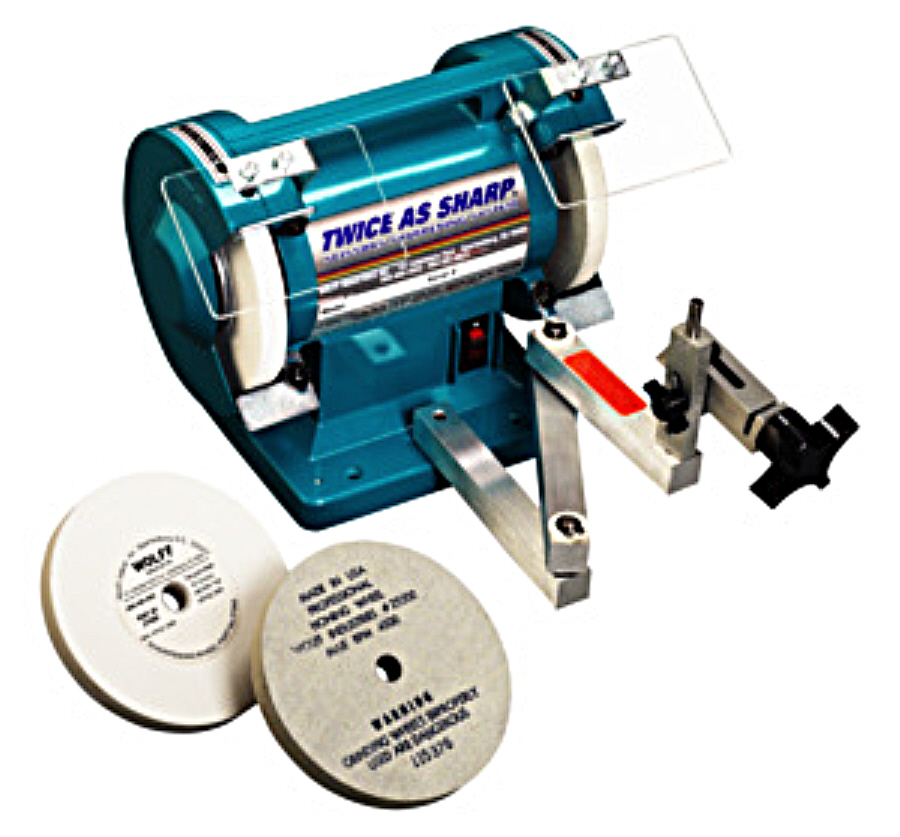There is good reason for this,
the fibre size on most common fabrics from natural to synthetics is
generally far finer than other common materials like paper, sheet
plastics, rubber and similar. A properly sharpened pair of shears have
a microscopically fine burr at the top edge of the blade that the
normal hollow grinding of the inner surface of the blades maintain.
They are in fact designed that way. While the closing action used in cutting pulls the blades together ensuring the blades cut properly, the opening action drags the burr upwards to ensure that the microscopically fine burr is pointing in the right direction for the next cutting stroke.
When you cut coarse or hard material like plastic sheet, you damage the very fine burr and the shears feel blunt to use and as they get worse they are prone to drag fine fabrics down between the blades. If you need to cut other materials like pattern board, plastic sheet or rubber, use another pair for general purpose cutters, keep your table shears purely for fabrics.
They are in fact designed that way. While the closing action used in cutting pulls the blades together ensuring the blades cut properly, the opening action drags the burr upwards to ensure that the microscopically fine burr is pointing in the right direction for the next cutting stroke.
When you cut coarse or hard material like plastic sheet, you damage the very fine burr and the shears feel blunt to use and as they get worse they are prone to drag fine fabrics down between the blades. If you need to cut other materials like pattern board, plastic sheet or rubber, use another pair for general purpose cutters, keep your table shears purely for fabrics.

To the naked eye the inside face of a blade looks smooth with a fine shiny edge at the top but at high magnification
you can see what the inside face and top edge really look like. If you
look closely you can see the raised burr at the top edge, which is what
you need to retain and this is through avoiding the incorrect materials that are harder or have coarse fibres like paper.
The guy who charges you $5.00 is
interrested in the $5.00 in the shortest possible time, not the results
you want. If you own a good pair of rare or high quality shears, find a
professional who aims at the results you need. It will cost you more
but it will cost a lot less than replacing a good pair of shears that
have been butchered. Also be aware that different types of scissors use
a different technology. Japanese designed very expensive hair scissors
use a radiused and polished edge that suits a particular style of hair
cutting but this technique works very poorly with fabric shears that
require a ground edge that leaves a cross scratch pattern on the top
cutting edge.


Often
you see a pair of shears
that have never been lubricated in their lifetime and while this may be
the case with owners who don't know how to pull apart and re-assemble a
pair of shears, many in fact know how to do this and it is worth making
the effort.
Any lubrication is better than none, WD40 or sewing machine oil will
work but if you want the best results on bigger shears, use a heavy
grease in the hinge mechanism and the side faces of the head and lock
nut of the hinge.
Depending on the hinge type, see what are the moving parts that run against each other and apply a coating of grease to any moving face that has metal to metal contact. You in fact only use a tiny amount of grease, usually applied with a small to medium sized screwdriver and after you have re-assembled the shears or scissors, you carefully clean off any excess. Avoid grease types that are graphite filled or contain molybdenum disulfide as they are dirty and designed for high pressure anti-seize applications.
Lithium grease for tasks like wheel bearings works well and if you have access, there are some very heavy types of grease made for the mining industry that are formulated to stay in place under load. Any heavy grease will do the job and most people who are even vaguely technical will have a tin of grease somewhere. If you have to make the sacrifice and go and buy a tin of grease, you can be consoled by the fact that it will probably last you over 50 years if you stripped and lubricated your shears once a week.
Depending on the hinge type, see what are the moving parts that run against each other and apply a coating of grease to any moving face that has metal to metal contact. You in fact only use a tiny amount of grease, usually applied with a small to medium sized screwdriver and after you have re-assembled the shears or scissors, you carefully clean off any excess. Avoid grease types that are graphite filled or contain molybdenum disulfide as they are dirty and designed for high pressure anti-seize applications.
Lithium grease for tasks like wheel bearings works well and if you have access, there are some very heavy types of grease made for the mining industry that are formulated to stay in place under load. Any heavy grease will do the job and most people who are even vaguely technical will have a tin of grease somewhere. If you have to make the sacrifice and go and buy a tin of grease, you can be consoled by the fact that it will probably last you over 50 years if you stripped and lubricated your shears once a week.